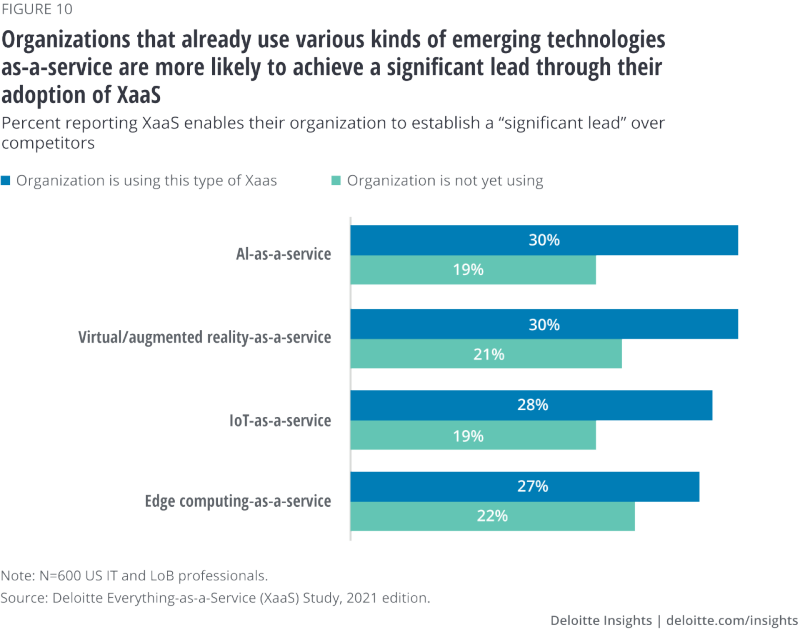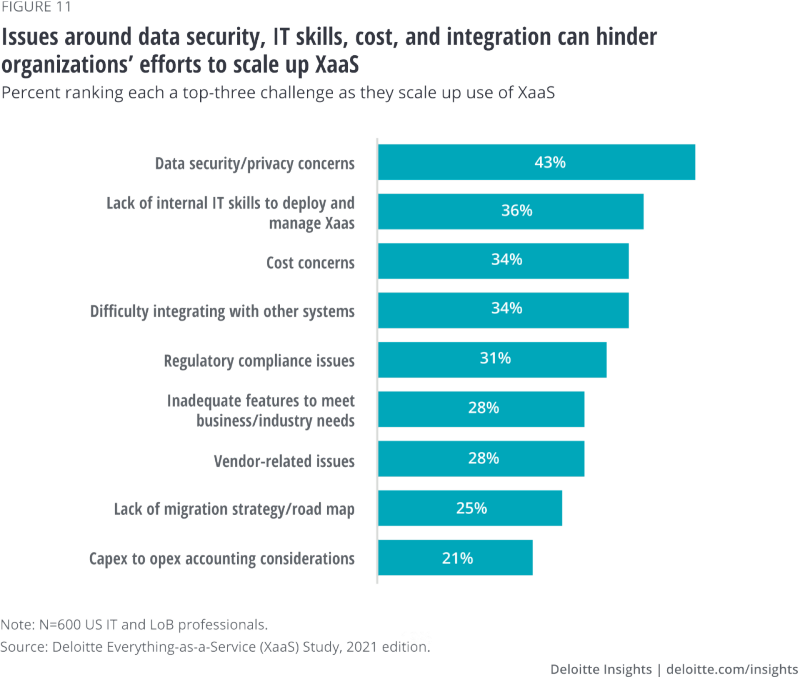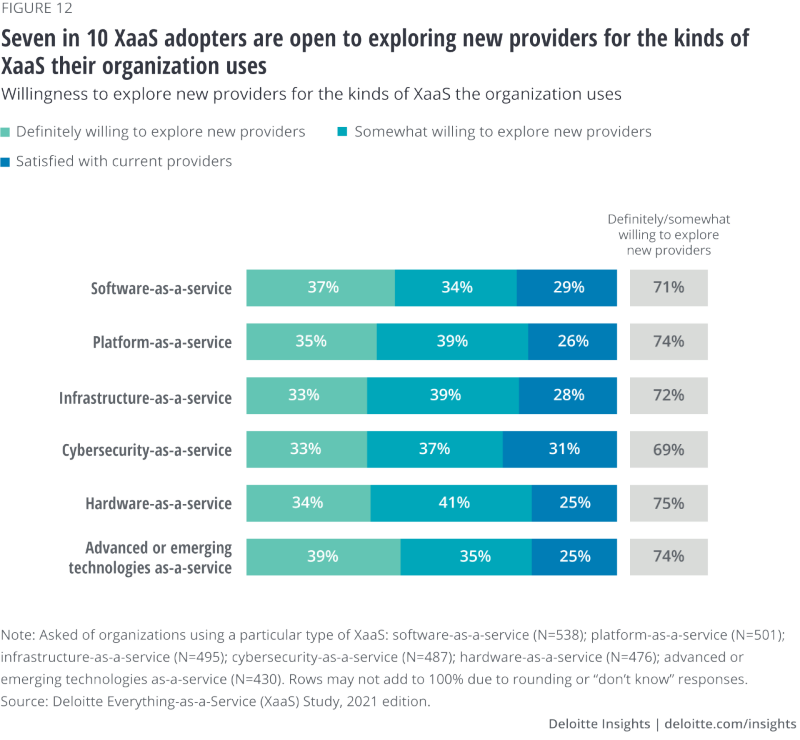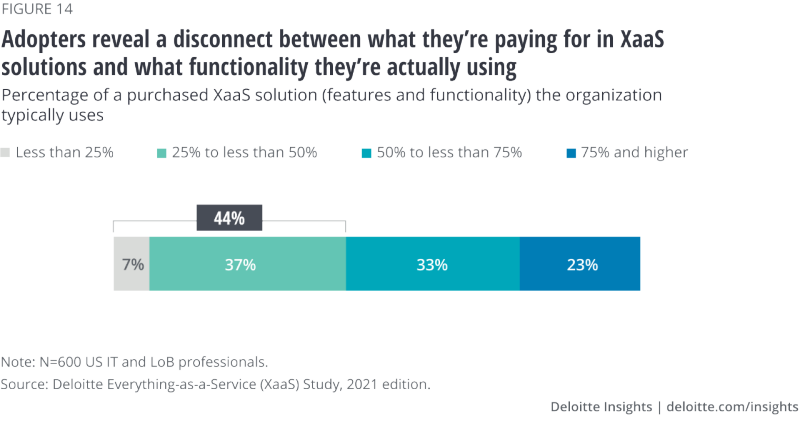XaaS—everything-as-a-service or anything-as-a-service—refers to products, tools, and capabilities that are delivered to users as services. For purposes of this article, we’re considering only enterprise IT as-a-service. Unlike traditional IT, which requires up-front purchase or licensing, the XaaS or flexible-consumption model allows customers to consume and pay for IT services based on what they need and use, typically through a subscription or pay-per-use. Some prominent types of XaaS include:
• Software-as-a-service (SaaS): Business applications delivered as a service—e.g., customer relationship management, messaging and collaboration, enterprise resource planning.
• Infrastructure-as-a-service (IaaS): Cloud-based provisioning of computing resources over the internet—e.g., servers, networks.
• Platform-as-a-service (PaaS): Platforms that provide the tools and environment to build, manage, and run software applications.
• Hardware-as-a-service: Hardware components—servers, computers, devices, IoT sensors, etc.—that are borrowed rather than purchased. Managed service providers (MSP) install the hardware at a client’s site, and a contract spells out terms—e.g., subscription costs, replacement terms, whether the provider handles monitoring and maintenance.
• Cybersecurity-as-a-service: Cybersecurity services that are integrated into corporate infrastructure on a subscription basis—e.g., authentication, antivirus, anti-malware/spyware, intrusion detection, penetration testing.
• Advanced/emerging technologies as-a-service: Advanced capabilities provided as services—e.g., AI-as-a-service, IoT-as-a-service, edge computing as-a-service.
Note that there can be overlap between these categories—for example, cybersecurity-as-a-service may be viewed as a specialized type of SaaS.
XaaS can be delivered in a variety of ways, such as on-premise (i.e., managed in one’s own data center and either subscription-based or running in a private cloud), third-party hosted (i.e., a vendor hosts the service), or public cloud (i.e., provided by a “public cloud” company). And there are some instances of XaaS that run as “hybrid cloud,” whereby some aspects of the service run on-premise and others are delivered via the cloud.6






























